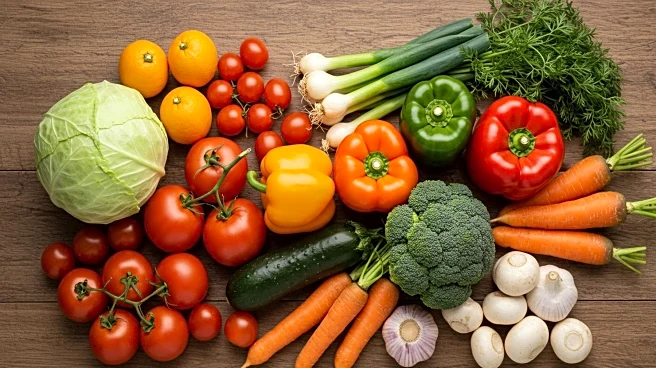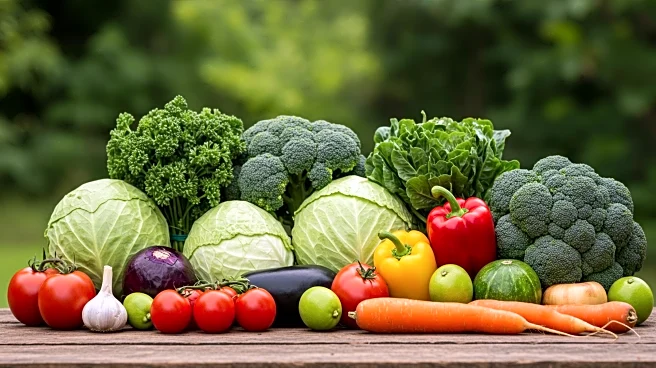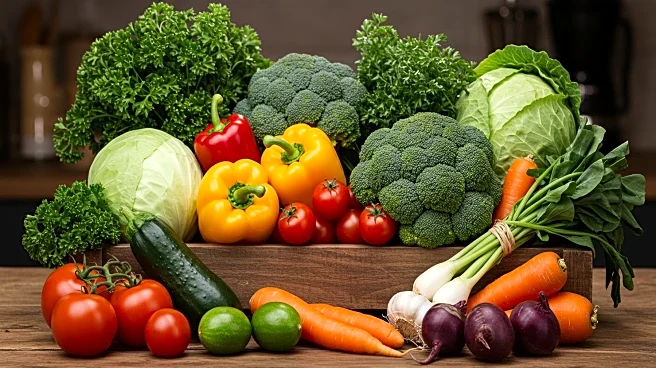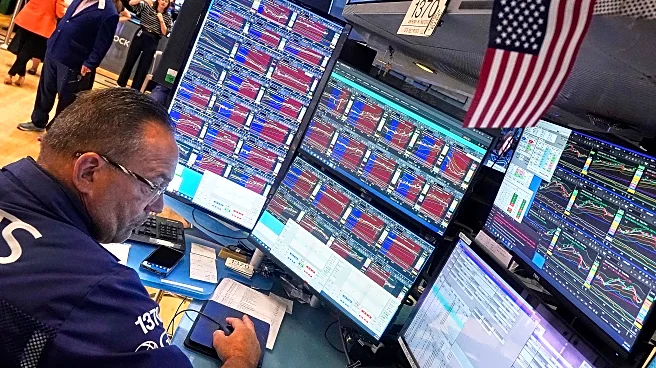What's Happening?
The wholesale price of vegetables in the United States surged by 38% in July, marking the largest increase for any product category, according to recent government data. This spike has raised concerns about potential increases in consumer prices at grocery stores and restaurants. Analysts attribute the rise to several factors, including President Trump's tariffs, adverse weather conditions, and supply chain disruptions. The U.S. imports over a third of its fresh vegetables, making the sector particularly vulnerable to tariff-induced price hikes. Additionally, the Trump administration's immigration policies, which have led to labor shortages in agriculture, may have contributed to increased wages and, consequently, higher wholesale prices. Despite these wholesale price increases, consumer prices for vegetables remained stable from June to July, with only a 0.2% increase over the past year.
Why It's Important?
The significant rise in wholesale vegetable prices could have broader implications for the U.S. economy and consumers. If these wholesale price increases persist, they may eventually lead to higher prices for consumers, affecting household budgets and potentially contributing to inflation. The situation highlights the interconnectedness of trade policies, labor markets, and consumer prices. Businesses, particularly those in the food service industry like Sweetgreen, have already reported profit declines partly due to tariffs. The potential for increased consumer prices could also impact consumer spending patterns, influencing the broader economic landscape. The situation underscores the complexity of trade policies and their ripple effects across various sectors.
What's Next?
If the current trend in wholesale price increases continues, consumers may begin to see higher prices for vegetables in the coming months. Analysts suggest that consumer price hikes could exceed 10% if the wholesale price surge persists. Businesses and policymakers will likely monitor the situation closely, considering potential adjustments to trade and immigration policies to mitigate further impacts. The Trump administration's ongoing development of permits for immigrant workers could also play a role in addressing labor shortages in agriculture, potentially stabilizing wages and prices.
Beyond the Headlines
The rise in wholesale vegetable prices also raises questions about the sustainability of current agricultural practices and the resilience of supply chains in the face of climate change and policy shifts. The reliance on imported produce highlights vulnerabilities in the U.S. food system, prompting discussions on the need for more robust domestic agricultural policies and practices. Additionally, the impact of immigration policies on labor markets may lead to broader debates about the role of immigrant workers in the U.S. economy and the need for comprehensive immigration reform.













